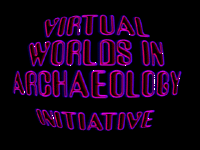This page presents the virtual reconstruction
of a portion of a Roman villa found in Aloria (Alava – Spain). The purpose
of the reconstruction is to serve as a graphic base to the ultimate publishing
of the memories of the excavation, the monographic exhibition about such
settlement that will be soon held at the Archaeological Museum of Alava,
as well as the making of a video for the exhibition and its later visualization
on the Internet.
The virtual reconstruction of archaeological settlements
is lately becoming the easiest and most attractive method of transmitting
the results of the archaeological interventions to the general public because
they are easily understood by everybody. On the other hand, the process
of virtual reconstruction of any settlement raises new questions about
the openings, roofing, etc, that archaeologists were not used to answer
so far, making the analysis of the structures found deeper.
The reconstruction of the Roman settlement of
Aloria has an special relevance given the fact that it has been covered,
thus being impossible to be visited anymore.
The Roman settlement of Aloria is located in the
Orduña valley (Fig.1), where the Nervion river is born and whose
riverbed has always been used as a communication route between the Alavan
plains and the Cantabric Sea. As a proof of its importance as a crossroad
Orduña held the customs house for centuries just because most of
the merchandises coming from Castilla had to pass through that strategic
spot.

